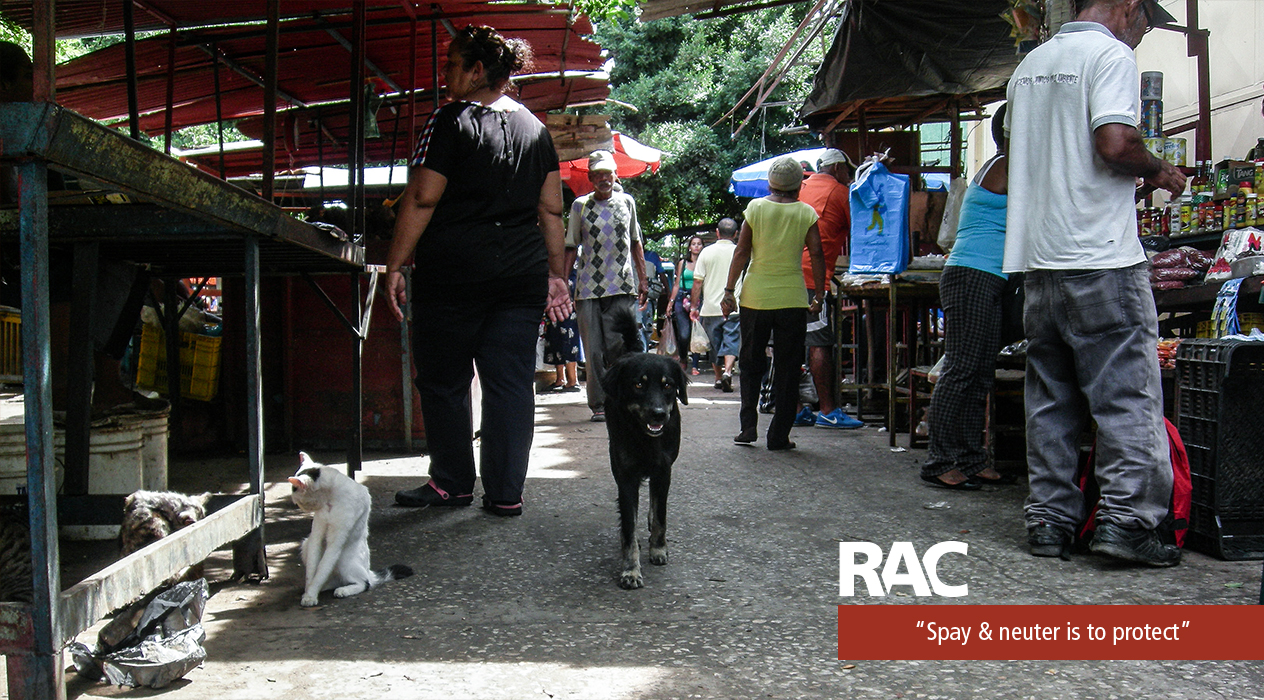Overpopulation of dogs and cats is a problem that affects most cities around the world, especially in developing countries, where socio-economic conditions and lack of education in respect for animals make these difficulties more acute.
With the rise of non-governmental animal protection organizations that promoted adoptions of abandoned animals, in the late 60s "early sterilization" of pets began to be practiced, mainly in the United States, so that all animals that were given up for adoption were already sterilized, thus preventing later abandonment.
Since then, early sterilization (between 6 and 8 weeks of age) has become popular, thanks to the dissemination of scientific arguments that dismantle the myths, lies and taboos that have been developed about it.
Considered the "father of early spaying and neutering," Dr. Leo Lieberman published in 1987 a study that followed the development of spayed and neutered puppies and kittens at two months of age and found that owners of pets spayed and neutered at an early age reported fewer behavioral, obesity, and general health problems than their peers who were spayed or neutered at a conventional age.
Today organizations such as QuickSpay, Spay USA, Spay Panama, Project Mckee and Almirante Brown Argentina have implemented early sterilization programs with excellent results, being a reference for those interested in the area. In addition, early sterilization is recognized by the World Society for the Protection of Animals (WSPA) and the Humane Society International (HSI) as an effective method and secure to prevent animal overpopulation: WSPA Veterinary Consulting states that sterilization can be performed from 8 weeks of age and before the animal reaches puberty.
Puppies and kittens neutered at an early age have much shorter recovery times and much lower mortality rates. A study at the University of Florida concluded that the claim about growth retardation in animals spayed or neutered at an early age was a myth: it was found that these pets ended up being even taller than those spayed or neutered at a conventional age or those that were not spayed or neutered ("intact"). Research on weight and body mass index in spayed pets stated that of the animals evaluated, cats spayed after 7 months tended to be more obese than intact cats, but found no significant statistical difference between the weight of unspayed and spayed cats at 7 weeks of age. Other studies have debunked the myth of urethral obstruction and urinary incontinence as a result of early spaying and neutering; urethral diameter has been shown to be similar in cats neutered at 7 weeks compared to intact cats.
The important thing is that early sterilization is practiced by a Veterinary Doctor who knows the technique and its particularities: the potential hypoglycemia and hypothermia, the small volume of blood of the puppies, and the delicacy of their tissues must be considered, weighed and anticipated. In the youngest animals (6-8 weeks) a fasting of only 3-4 hours is recommended and they should be fed again with small rations 1 to 2 hours after recovery from anesthesia. A special preparation of the surgical site, incisions, tissue manipulation and ligatures should be made, using different techniques, according to the anatomy of the puppies and kittens.
Studies and research have shown that the mistrust of early spaying and neutering by some owners and veterinarians is not scientifically proven and that far from generating negative effects on the health of our pets, neutering surgery between 6 and 8 weeks of age on dogs and cats brings many more benefits for the pets, the family and society in general.
Bruno Alvarez Ascanio
Veterinary Doctor at UCV
Master in Public Management at IESA
Head of the Animal Protection and Control Center of the Municipality of Baruta, Edo.
Bibliographic references:
- Aronsohn, M. y A. Fagella (1993): “Surgical techniques for neutering 6-to-14-week-old kittens”. J Amer Vet Med Assoc. Vol. 202. p.p. 53-55 (3).
- Campos, H. y M., Iniesta (2007): “Control Poblacional de Perros y Gatos mediante esterilización temprana”. Agrupación para la Defensa Ética de los Animales.http://blog.pucp.edu.pe/item/16734/esterilizacion-animal-temprana. Consulta: 21 de mayo de 2012.
- Howe, L. y P., Olson (2000): “Prepuberal gonadectomy, early age neutering of dogs and cats.” Int. Vet. Inform Serv. Recent Advances in Small Animal Reproduction.
- Lieberman, L. (1987): “A case for neutering pups and kittens at two months of age.” J Amer Vet Med Assoc. Vol. 191. No. 5. p.p. 518-521 (4).
- Mackie, M. (2000): “Early age neutering: perfect for every practice.” Veterinary Proceedings, North American Veterinary Conference. No. 14. p.p. 653-655 (3).
- Root, M. (1999): “Early spay-neuter in the dog and cat”: Veterinary Clinics of North America: Small Animal Practice, Vol. 29. No. 4. p.p. 935-941 (7).
- Salmeri, K y col. (1991): “Gonadectomy in immature dogs. Effects on skeletal, physical and behavioral” development.” J Amer Vet Med Assoc. Vol. 198. No. 7. p.p. 1193-1203 (11).
- SOS Gatitos Chile (2011): “Beneficios de la esterilización temprana”:http://www.sosgatitos.cl/conoce-a-tu-gato/3-esterilizacion/8-beneficios-de-la-esterilizacion-temprana.html. Consulta: 21 de mayo de 2012.
- Young, J. (s.f.): “The Controversy is Over: Prepubertal Nutering is the Surgery of Chioice”.

